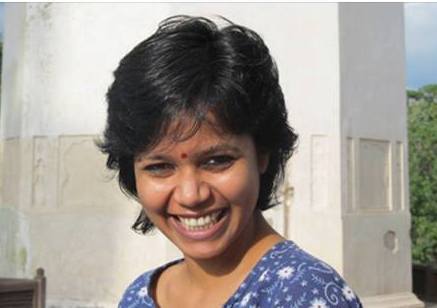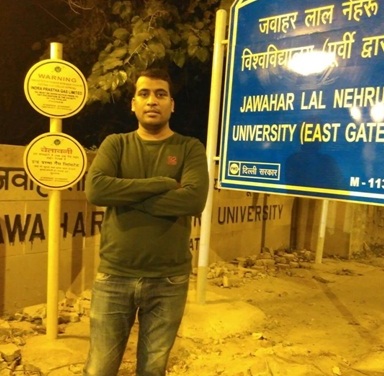Sthabir Khora
 Recently 4 judges of the collegium in the Supreme Court accused the chief justice of misuse of his discretion. (https://timesofindia.indiatimes.com/india/live-updates-unprecedented-press-conference-by-4-senior-sc-judges/articleshow/62470543.cms). In this context, Upendra Baxi, quotes the Austrian jurist Eugene Ehrlich- “The best guarantee of justice lies in the personality of the judge.(http://indianexpress.com/article/opinion/columns/when-judges-dissent-supreme-court-crisis-5029057/).
Recently 4 judges of the collegium in the Supreme Court accused the chief justice of misuse of his discretion. (https://timesofindia.indiatimes.com/india/live-updates-unprecedented-press-conference-by-4-senior-sc-judges/articleshow/62470543.cms). In this context, Upendra Baxi, quotes the Austrian jurist Eugene Ehrlich- “The best guarantee of justice lies in the personality of the judge.(http://indianexpress.com/article/opinion/columns/when-judges-dissent-supreme-court-crisis-5029057/).
It’s not difficult to imagine what he is fending off. It is a bit puzzling when I am told that I am in a problem but cannot intervene to fix it. The key issue is judicial independence as against outside interference. One of the major points of intervention is appointments to the higher judiciary. In that, probably the most important issue is reservation/representation in the judiciary.
Are we interested in independence or impartiality?
Judicial independence cannot be like the independence of a country which means sovereignty of that country. Even sovereignty of a state in this age of globalisation is circumscribed by various international frameworks and realpolitik. Therefore judicial independence can only mean ‘independence in its own sphere’. But this type of independence is required not only for the judiciary but for every organ of the state. The executive too requires independence from judicial interference. The doctrine of proportionality applies to all the three branches as well. The three branches are based on the principle of separation of powers. But Max Weber distinguishes between limitations of power and separation of powers. ‘Limitation of power exists; where, due to sacred tradition or enactment, a particular imperium is restrained by the rights of its subjects’ (1978:652). This means that there might be a zone of discretion within a particular sphere not restrained by separation of powers. The Roster in the court is probably such an instance.
Independence per se is not a virtue
Let’s begin with a quote from the same Eugene Ehrlich.
the judge has often, it is true, disregarded the law in the service of an unscrupulous sovereign power; occasionally, supported by law, he has been able to offer successful resistance to a strong sovereign power; but he has never risked a combat with the state, society, and traditional law. Much less has juristic science, with its limited powers, ever done this. (2002:181).
No one is more independent than the despot. If this can be avoided by claiming oneself as a saviour then it sounds like a white knight argument. If the White Night argument is extended, it can support all oppression as every oppressor will say s/he is actually a saviour. That’s why a good government cannot be a substitute for self-government.
This indicates that what we are really interested in is impartiality rather than independence per se. Independence is supposed to be a requirement for impartiality and rightfully so. If a judge can be influenced from outside through various devices then obviously s/he has little scope for impartiality. ‘Fairness’, which implies impartiality is the stuff of political theory. Amartya Sen (2010) prefers a comparative-actual behavioural approach to that of a transcendental-institutional approach (John Rawls). He prefers open impartiality (impartial spectator of Adam Smith) to that of closed impartiality (veil of ignorance of Rawls). The first type of impartiality assumes full information while the other an artificial suspending of all information. In case of Indian higher judiciary, the assumption seems to be the veil of ignorance as bias is assumed away.
The debate on ‘objectivity’ in social science is like the debate on impartiality- to remove bias. Here, we have moved a long way from a scientific positivistic objectivity to an objectivity acquired through inter-subjective agreement. An inter-subjective objectivity will be far away from the Rawlsian veil of ignorance.
External and internal independence
Independence is of two types external and internal. External independence, of course, is attained through preventing external interference. But independence also means to be free from internal interference- the biases. The judge not only has to be free externally but also internally, in his mind, from biases. Justice Dowsett explores this in his paper (Dowsett, 2010). According to him following are the ways in which biases can creep in unconsciously:
• Flowing from the theory of probability– if there are 10 domestic violence cases and 8 false, then the probability of the 11th case as false can create prejudice. This is before even the case has begun.
• Judge’s opinion of a lawyer.
• Judge may not like particular type of cases.
• At trial, there are other potential sources of prejudice. Some are obvious – the witness who is, in one sense or another, attractive or unattractive; counsel who is co-operative, quick and well-prepared and counsel who is not; the case that is straightforward, and the case that resists all efforts to simplify it, or to reduce it to easily manageable proportions; the case that clearly merits the time, money and effort put into it, and the case that does not. Another possible source of prejudice is a premature conclusion as to the merits of the case. Prejudice may arise out of conflict between the case in hand and the judge’s other commitments. This is a long-standing problem. As Pope wrote: Wretches hang that jurymen may dine. (p-10)
• We may say ‘Let justice be done though the heavens fall’, but there is, usually, an understandable desire to avoid such a catastrophe. On the other hand, it must be acknowledged that some people revel in producing startling effects. This, too, can be a source of judicial prejudice.(p-10-11).
This independence of mind is not fixed but can change. Justice Bhagwati, Beg, and Chandrachud who were in Maneka Gandhi case also were in the majority side in ADM Jabalpur case. This may point out that they exercised their independence in Maneka Gandhi case which they did not in ADM Jabalpur.
The above shows that a positivistic conception of permanent objectivity is more of a theoretical construct. The complaint of the four judges against the Chief Justice seems to be that the CJ is abusing his discretion. Such abuse cannot be prevented by a rule-based positivistic objectivity. What the four are really pointing at is an objectivity in the sense of inter-subjective agreement. But then, if we really want to attain inter-subjective objectivity, then the representation of all sections of society is necessary. When upper caste judges decide about reservation issue, there is a possibility of a conflict of interest. Simply invoking a veil of ignorance won’t produce one.
Does legislative participation in appointment take away the independence? External independence is attained not only through appointment but also by making removal difficult. In spite of the collegium, the parliament still has the power to impeach. Should it want to abuse that power, collegium won’t be able to prevent that.
If court makes laws, then it can not avoid the question of representation
Hardly anybody will dispute about ‘no taxation (legislation) without representation’. A non- representative body ought not make laws in a democracy. This is the logic of representation in parliament and the nitty gritty (reservation) thereof. Representation in judiciary is really not warranted if it is merely an interpreter or umpire. But it is widely agreed that courts not only interpret law, they also make laws. Justice Oliver Wendell Holmes said ‘the prophecies of what the courts will do in fact and nothing more pretentious are what I mean by Law’ (Ratnapala, 2009). The position of the realist jurisprudence is that ‘law is what the court says’. In the Indian context there are many rights (health, education, water, pollution free air etc) which have been created by the Supreme Court. So, to say that courts merely interpret and not create law is a bit of a rhetorical statement. The clever way of saying is that court ‘finds’ the law. But Max Weber has said that both law making and law finding can be both rational and irrational. ‘Lawmaking and law finding are substantively irrational to the extent that decision is influenced by facts of the particular case as evaluated upon an ethical, emotional, or political basis rather than by general norms’ (1978:656). ‘As late a writer as Blackstone called the English judge a sort of living oracle’ (ibid:767). In the contemporary times justice Aharon Barak in his book commented:
the main issue is, of course, how should we determine the social importance of the benefits gained by the limiting law and the social importance of preventing harm to the limited constitutional right. The answer is that the determination is not scientific or accurate. The balancing between conflicting principles is not conducted through scientific instruments. Rather, it is derived, inter alia, from different political and economic ideologies, from the unique history of each country, from the structure of the political system, and from different social values. (Barak, 2012:349)
This basically means that there is nothing like a standalone objectivity. Justice is a balancing act. Independence has to be balanced against impartiality.
The ‘independence’ theory is based on the assumption that judges do not create fact but only apply laws to the fact. Fact is yours and law is yours. Therefore, all that is done is applying a law to the fact. Therefore you do not need representation. However, law can make facts in the commonsensical notion relevant or irrelevant (the admissible and inadmissible evidence), can create new facts like the juristic personality. According to Ehrlich, it is impossible to separate the question of fact from the question of law. ‘ … in the language of jurists, in a much greater number of instances, judgement is being rendered upon questions of fact than upon questions of law.’ (Ehrlich, 2002:35)
Statistical proof is used to capture indirect discrimination
‘Numbers do not lie’ is a bit extreme position. But they must be given a hearing. Numbers lead to profound results. The starting point of Weber’s Protestant Ethic and Spirit Of Capitalism was statistics. Weber proceeded from an empirical study of one of his pupils, Martin Offenbacher, on occupational stratification according to a religious denomination in Baden. It revealed that a disproportionate number of protestants owned capital and entrepreneurs and made up the higher qualified technical or sales personnel in the business. Then he collected similar studies about towns especially of 16th century to see if any relationship between certain expressions of the old protestant spirit and modern capitalistic culture is to be found (Kasler, 1988). The result was a widely influential book. One could see what the initial statistics led to.
In the legal sphere, proof by the statistical test is an evidentiary device to capture indirect discrimination. Legal architecture, including statistical proof, to counter indirect discrimination is already in place in EU and UK. With due respect to the court, the fact of the extremely low percentage of SC/ST in the higher judiciary (Prasanna Kumar, 2016), if it was in a government department, would have been a fitting case of indirect discrimination, if there was a law on indirect discrimination with provision for statistical proof.
Conclusion
George Gadbois Jr, for readers’ ease, presents in a stylised manner about judges of the Supreme Court of India in the chapter called The archetypal judge in his book:
He was the son of a lawyer, often born into a family where the practice of law had been a tradition for generations. He was a Hindu and, more likely than not, a Brahmin. He was born in an urban area into a wealthy or upper-middle-class family…He may have met the usual criteria of merit- integrity, professional competence, incorruptibility, and neutrality towards litigants- but was not selected for that reason. His religion, seniority, state, and region of origin, among other considerations, were more weighty than merit as traditionally defined….He remained active after leaving the bench. Serving on officially appointed commissions or tribunals and chamber practice were the most common post-retirement activities. (2011:376-377)
~
References
Barak Aharon, 2012, Proportionality: Constitutional Rights and their Limitations Cambridge University press.
Gadbois, Jr George H.,2011, Judges Of The Supreme Court Of India 1950-1989, Delhi: Oxford University Press
Kasler Dirk, 1988, Max Weber: An Introduction to His Life and Work, UK: Polity Press.
Dowsett J.A. 2010, Prejudice -The Judicial Virus, Australian Journal of Forensic Sciences, 42:1, 37-48, (http://www.fedcourt.gov.au/digital-law-library/judges-speeches/justice-dowsett/dowsett-j-20090207 accessed January 17, 2018)
Prasanna Kumar Alok, 2016, Absence of Diversity in The Higher Judiciary, Economic & Political Weekly, Vol Li, No 8:10-11
Sen Amartya, 2010, The Idea Of Justice, Penguin:UK
Ehrlich Eugen, 2002, Fundamental Principles of the Sociology of Law, London: Transaction Publishers.
Suri Ratnapala, 2009, Jurisprudence, Cambridge University Press.
Weber Max, 1978, Economy and Society – an Outline of Interpretive Sociology, University Of California Press, (https://archive.org/stream/MaxWeberEconomyAndSociety/MaxWeberEconomyAndSociety_djvu.txt)
~~~
Dr Sthabir Khora is Associate Professor in the School of Education, Tata Institute of Social Sciences. His book “Education and Teacher Professionalism” (2011, Jaipur: Rawat Publications) is recommended reading in the M.Ed Syllabus of Punjabi University, Patiala.










